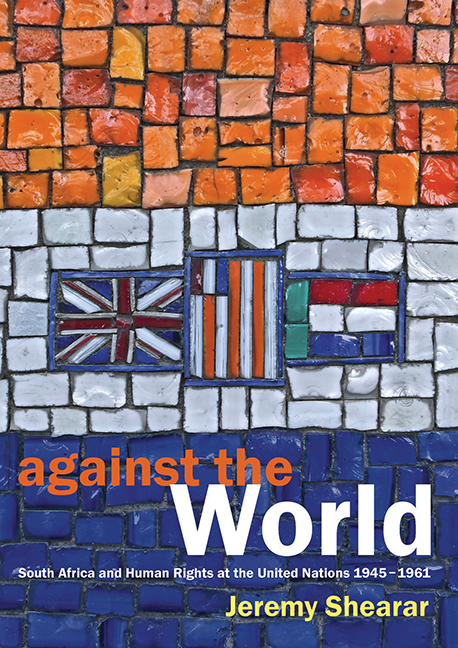Book contents
- Frontmatter
- Contents
- Acknowledgements
- Abbreviations
- Introduction: ‘What we have lost is all the more reason for cherishing what survives’
- 1 Quod severis metes: Birth of the United Nations
- Chapter 2 South African Indians
- 3 Universal Declaration of Human Rights
- 4 International covenants on human rights
- 5 United Nations surveys of human rights issues
- 6 Evolution of human rights at the United Nations
- 7 State sovereignty at issue
- 8 Apartheid on the agenda
- 9 Shadow of Sharpeville
- 10 General relations with the United Nations
- 11 Concluding observations
- Appendix: Selected provisions of the United Nations Charter
- Sources and references
- Index
4 - International covenants on human rights
Published online by Cambridge University Press: 19 March 2020
- Frontmatter
- Contents
- Acknowledgements
- Abbreviations
- Introduction: ‘What we have lost is all the more reason for cherishing what survives’
- 1 Quod severis metes: Birth of the United Nations
- Chapter 2 South African Indians
- 3 Universal Declaration of Human Rights
- 4 International covenants on human rights
- 5 United Nations surveys of human rights issues
- 6 Evolution of human rights at the United Nations
- 7 State sovereignty at issue
- 8 Apartheid on the agenda
- 9 Shadow of Sharpeville
- 10 General relations with the United Nations
- 11 Concluding observations
- Appendix: Selected provisions of the United Nations Charter
- Sources and references
- Index
Summary
First draft covenant: South African response
Early in 1948, the CHR asked the UN Secretary-General to circulate to member states for their consideration and comment three draft texts, which together composed an international bill of human rights. They comprised a declaration of general principles, a draft international covenant of human rights, and measures of implementation. The aim of the draft covenant (hereafter the draft) was to formulate in a legally binding instrument the rights approved for inclusion in the declaration of general principles. The DEA asked the SA law advisers to examine both the declaration and the draft. The declaration, finally adopted on 10 December 1948 as the UDHR, was considered in Chapter 3.
The law advisers noted that the use of the phrase ‘as being among’ in Article 1 of the draft made it clear that the rights and freedoms enumerated in the text were not exhaustive. They believed that the rights mentioned should, as a protective measure, be considered exhaustive until amendments were introduced. The draft implied that international law would no longer simply be concerned with relations between states, but that a hitherto unknown field of relations between states and individuals would be added to it. Eventually, the notion that these rights were ‘founded on the general principles of law recognised by civilised nations’ would be used to make the covenant binding on third parties. ‘Those who are unable to sign the Convention [sic] may find that they have avoided treaty obligations merely to be confronted with so-called legal obligations.’
Several articles, the law advisers remarked, contained provisions at variance with SA law. Article 5 on the right to life seemed to recognise only one exception, the death sentence, leaving out of account loss of life resulting from the suppression of riots, selfdefence or attempted arrests. The drafting came under severe criticism, emanating from the law advisers’ view that universal standards did not exist. People differed, for example, on what constituted ‘cruel and unusual punishment’. Some articles, like Article 11 on freedom of movement, went beyond what could legitimately be considered fundamental human rights. Movement control was necessary in a multi-racial country like SA.
The SA government communicated its views to the Secretary-General. Although other governments also commented, occasionally in similar vein to the Union, only the SA suggestions, numbered as they appear in the relevant UN documents, are tabulated below.
- Type
- Chapter
- Information
- Against the WorldSouth Africa and Human Rights at the United Nations 1945–1961, pp. 79 - 104Publisher: University of South AfricaPrint publication year: 2017



